#Robin Goodfellow - Main
Explore tagged Tumblr posts
Text
Bigots: bEiNg TrAnS aNd NoNbInArY iS jUsT a MoDeRn TrEnD!1!1
Me, an intellectual and theater nerd: Puck is gender >:)
#no you cannot change my mind#puck is somehow both gender and not gender#puck is non-binary canon#source: trust me bro#but seriously#having a main character that is played by both male and female#sounds gay#I diagnose you with the QUEER#But tbh all Shakespeare is gay#shakespeare#theater#theater kids#nonbinary#robin goodfellow#gender
0 notes
Note
Yknow I'm kind of living for how Keagan really is this mastermind character working behind the scenes in the ½ part of Shae and Maeve's routes. It's giving Caius from FF13-2.
Send help because while all the characters shine (especially the main LI in each route), it's building hype for when his route comes out, and I'm so invested in seeing how he manages to royally f*ck up everyone else's routes.
(Sidenote: Does that make him the steelies courts Robin Goodfellow?)
The characters, fans, and sometimes devs:



#ask#lachesis answers#na daoine maithe#the good people#interactive fiction#dating sim#visual novel#otome
34 notes
·
View notes
Text
Rewatching Wolfwalkers and obviously the first thing I think of is a Fable SMP AU, I have many ideas, but this is the main one I like. (This is going with the main idea that Mebh and Robin are basically sisters)
Mebh - Vaeh
Robin - Cari
Moll Mactire (Mebh's mother) - Fenris
Bill Goodfellowe (Robin's father) - Rae
It's basically insinuated, and I'm pretty sure canon that Bill and Moll get together after the events of Wolfwalkers, so it just made sense to me
12 notes
·
View notes
Text

Finished this last night, review below ⬇️
Similar to Queen of All Witcheries, Jason Mankey takes the reader on a journey through the development of the Horned One as Witches view and approach Him in the present day. Instead of focusing on authors as Chenak did, however, Mankey draws more of his points from mythology, folklore, and archeology (though influential authors are not ignored). He similarly reminds us that the past is an influence, but that modern ≠ devoid of meaning. He especially stresses that the gender and sexuality of the Horned One, in many of His guises, is far removed from toxic masculinity, heteronormative, and cisgendered. Mankey's writing style is casual and approachable, personal with just the right mix of humor and gentle authority. There are several rituals included, some photos and drawings, an abundance of footnotes, and an extensive bibliography with the author's own comments on the works.
I'll start with my gripes, as minor as they are. Mankey is a Gardnerian High Priest, yet states he doesn't find Gardner’s work to be required reading. His main complaint seems to be Gardner’s reliance on Murray's vision of the Witch-Cult and other historical claims that have since been deemed inaccurate. For me, this is a poor reason to exclude Wicca's founder from a reading list, especially if you hope your students will approach material with a critical eye. He also, at the same turn, lauds Murray's work for how influential it was on modern Witchcraft. Mankey also states he is a fan of Silver RavenWolf, an author who is not generally well recommended, in part also for her dubious historical claims. All of which left me asking, "Well, which is it?" His comments on Gardner are relegated strictly to the bibliography though, his works treated with respect if not reverence in the text itself, and the mention of support for RavenWolf is brief and fleeting.
To the positive, several passages moved me nearly to tears, especially the re-telling of a ritual in which Mankey himself participated. As a younger person, I connected deeply to the Horned God, and reading this book, I felt Him close many times. This book is clearly a labor of love and worship for this Deity.
Hail Cernunnos! Io Pan! Hail to Lucifer, Satan, Krampus and the Witchfather. Hail to Old Hornie, the Green Man, and Robin Goodfellow. Hail to Elen of the Ways and Herne the Hunter.
Hail to the Horned One!
4 notes
·
View notes
Text
saltburn x shakespeare, a character and costume analysis 🧚🏼♂️🕸️🍾

because this movie isn’t that good, but god is it pretty. this is not an attempt to make the film appear more brilliant than it is—the script and direction does that just fine without my help. it is, however, a testament to the costume design and my own adoration of shakespearean influence in media. so many spoilers under the cut.

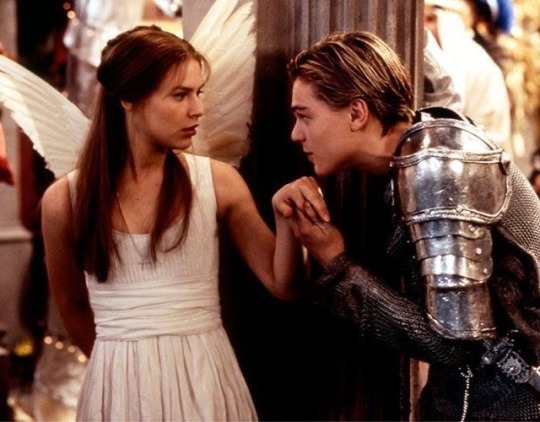
despite being the romeo type, elordi’s felix is cast as juliet, embodying clare danes’ iconic 1996 costume. but while juliet’s wings and white dress signal purity and innocence, felix’s wings are more ‘the fallen angel’ by alexander canabel. he is also the only main character not directly drawing from the party’s theme, dressing from the wrong play. considering he ends up dead, maybe this wasn’t the best plan—stick to the dress code folks. his manner of death (poisoning) also matches the death of romeo, driven to suicide at the supposed loss of his lover.


farleigh is bottom, the hapless (terrible) actor who ends up the butt of a fairy’s practical joke and complicated politics. despite being in the family, farleigh is always an outsider, a donkey in fairy court. this costume is also hilariously literal when you think abt it
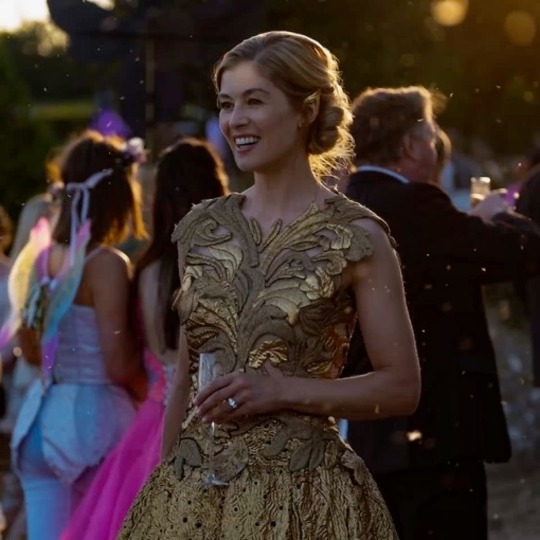
rosamund pike beautifully embodies the fairy queen titania, which i think is perfect for her: someone who appears regal and untouchable, but easily succumbs to pride and petty gossip at the slightest opportunity.

barry keoghan’s oliver quick is our robin goodfellow, or puck. puck is the one who moves all the pieces in ‘midsummer,’ from enchanting the lovers to cursing bottom, just as oliver is the mastermind behind the downfall of the cattons. it’s also a visual fake-out, as the deer antlers give the impression of him being a prey animal out of his element, when really he’s the most in control.


while less explicitly shakespearean, venetia’s spiderweb dress, dotted with dewdrops and complete with a spider hanging down the open back is a reference to verses of ‘midsummer’ such as act 2 scene 1: ‘and i serve the fairy queen, to dew her orbs upon the green,’ and act 2 scene 2, ‘weaving spiders come not here,’ all lines spoken by fairies in service of titania.
#but tbh this movie isn’t that good guys#character analysis#a midsummer night's dream#saltburn#costume analysis#costuming#jacob elordi#barry keoghan#rosamund pike#alison oliver#archie madekwe#shakespeare#romeo and juliet
31 notes
·
View notes
Text
My DCCU: Character Essay - Mr. Mxyzptlk
So...did you see the last episode of MAWS?
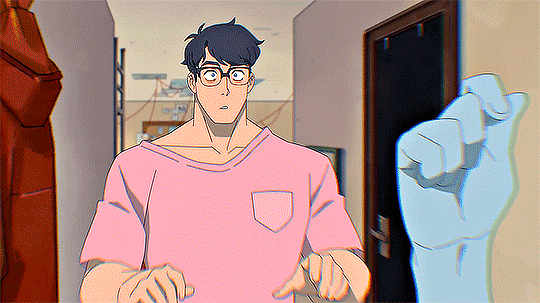
I just wrote an essay discussing this series, and without making you read that (although here it is if you wanna), let's just say I love almost everything about it, but the villains have me...nervous. Which, yeah, not exactly a unique take on the series, critically speaking. It is, in fact, the most common refrain about the series amongst Superman fans.
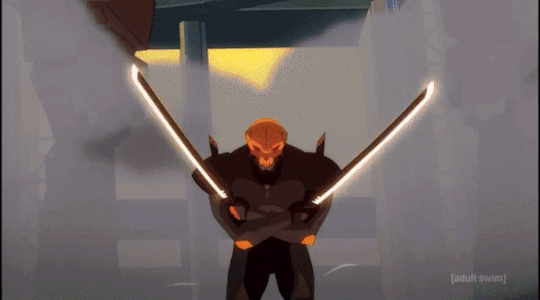
Now, since then, to be fair, we've gotten some very promising characters make their debut, or becoming more prominent. Task Force X - which includes Amanda Waller, the General (who's gotta be Sam Lane, but may also take some inspiration from Wade Eiling; time'll tell on that one, though), and a very cool super-armored version of Deathstroke - are our main antagonists, and I'm excited to see what comes out of them. Their former associates, power couple Brain and Monseiur Mallah (who are also gay in the comics, if you didn't know) are a more sympathetic turn on the characters, but quite satisfying in this form.
But no, there's only one real reason I'm making this post. And that is of course, the villain featured in the most recent episode, as of me writing this post. He's already up above, so let's just get into it.

Fun fact about me: I love a lot of Superman villains, but of all of them, my absolute favorite is Mr. Mxyzptlk. He's a mischief-making, chaos-loving, harmless and harmful menace from the 5th dimension, who obeys no laws of the dimensions below. The origin of legends, past and present, of genies, leprechauns, fey, and imps that tease men with ill-fated wishes. An all-powerful being disguised as a man dressed in a funny little hat.
Mr. Mxyzptlk is the Robin Goodfellow of Superman's world. He appears to amuse himself, no matter the cost to the Man of Steel's day. Usually, you can send him back via making him say his own name backwards, but that's just one of the rules to Mxy's games. And make no mistake, that's what they are: games. Mr. Mxyzptlk has played on the side of angels and devils, and he really only cares about his own amusement. And his relationship with Superman, varied as it can be, helps to fuel his morality.
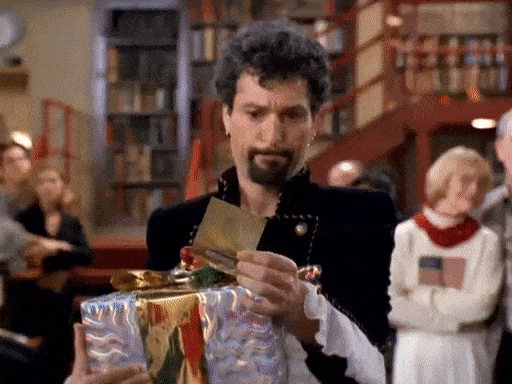
I could bring up the character's live-action appearances (which are notable in their own right), but those are mostly afraid to really go for it. The closest to the original character would be Michael J. Pollard's version in Superboy, a mostly forgotten series from the late'80s, and a version that actually wears the comic book outfit. There's also the Supergirl version, which was notable, and played by Peter Gadiot and Thomas Lemmon; and there's the version played by Howie Mandel (yes, really) in Lois and Clark: The Adventures of Superman in the '90s, which is a more evil but passable version of the character. Oh, and the Smallville version? Yeah, absolutely doesn't count. If you want a true adaptation for Mxy, you gotta go animated.
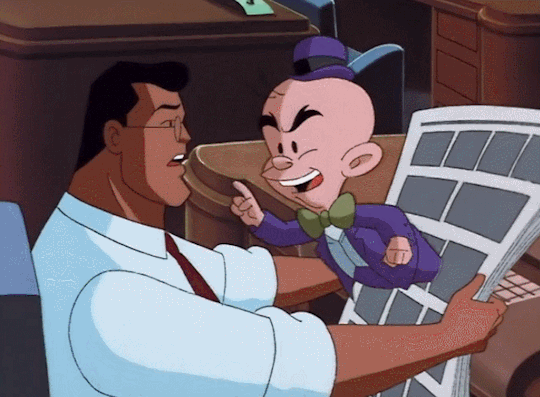
The most iconic adaptation of this character was portrayed by the late, great Gilbert Gottfried in Superman: The Animated Series. Now, I say the most iconic, but that's probably a bit biased on my part. In my opinion, this is the most fun and accurate version we've seen of the character, taking from his original design for inspiration. An annoying imp that appears every three months, his debut episode in the series, Mxyzpixillated, is one of my favorite episodes of the series, and goes balls-to-the-wall wacky, as you should with Mxyzptlk.
The character had only a few more appearances in the series after his first, but Gottfried's performance was so memorable, he was brought back for multiple incarnations, including the video game DC Universe Online, and the more recent animated series Justice League Action, which would be one of Gottfried's last performances, and therefore his last appearance as the character. He'll be sorely missed for a number of reasons, but the voice he gave to the imp is never going to leave me.
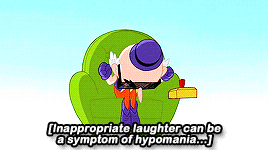
Which brings me to the version of the character we see in MAWS. And yeah, this is obviously a VERY different version of the character, appearance-wise. Outside of the orange and purple color scheme and one other exception, this version has no design similarities with any version of Mxyzptlk, and is obviously very anime-inspired, as is the entire series. I mean, for Chrissakes, the title of the episode is a reference to Ouran High School Host Club. They knew what they were doing.

We meet Mxyzptlk in the middle of a heist, and he already shows his power and prowess by tricking Clark immediately. Amongst a bunch of fantastic DCU references, and a lot of multiverse talk, we eventually stumble upon his actual goal: the reclamation of an ancient artifact stolen from him by the League of Lois Lanes. And that artifact is...his hat. THE hat. And lemme tell ya, I was overjoyed to see that stupid little bowler.
Once he gets it, we get a glimpse of true Mxyzptlk power, as he goes full chaos lord on us. He's eventually defeated through trickery with portals, and NOT through the backwards name gambit. And even then, he's not actually defeated, and returns in the end to annoy his new target: Lois Lane. Yeah. He's haunting LOIS, not Clark. And honestly, I'm...very intrigued.

This Mxyzptlk is, honestly, a faithful version of the character, straight-up. Sure, there are elements missing, and the outfit is completely different, but he also sort of looks like you'd expect an imp or genie to look. Like Alan Moore said in Whatever Happened to the Man of Steel?, why should an extradimensional imp look like a little man in a suit and funny little bowler? I think this works, honestly.
I'm also excited to see him in the future of the series, and see what they do with the character as a result. Mxyzptlk is, as I said earlier, one of my favorites, whether he helps or hurts the Man of Tomorrow. And if I had one complaint, it's that I want him to go wackier. Like, CRAZY. Watch his appearances in Superman: The Animated Series if you haven't, and you'll see what I mean. The potential is quite literally unlimited when it comes to the fifth dimension imp.
But if that's the case...what would I do with Mxyzptlk in my DCCU?
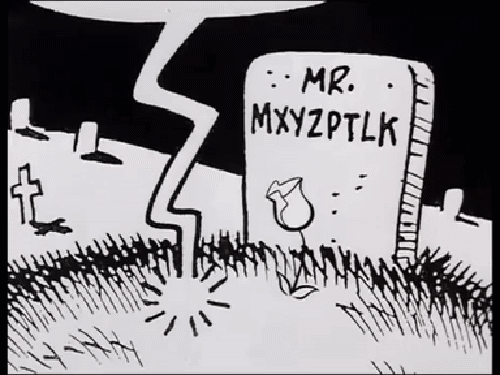
Mr. Mxyzptlk in My DCCU
I would do...not much more than Easter eggs at first. Look, I love Mxyzptlk, but having him as a character in a film or film series is extremely tricky. But instead, Mxyzptlk is both a seen and unseen force in my DCCU, hovering around Superman's world without actually interfering in it directly. Not exactly his bag, I know, but it's a good way to get him to work in a film series. Essentially, I'm turning him into a background character in the first and second films, to be noticed by only the most observant. Disguised as other characters, maybe making odd gestures every now and then as if to manipulate things around him. The ultimate Easter egg character, basically. Until, possibly the very end of the second, or even the third film in the franchise.
Fast forward to the second film's post-credit scene.
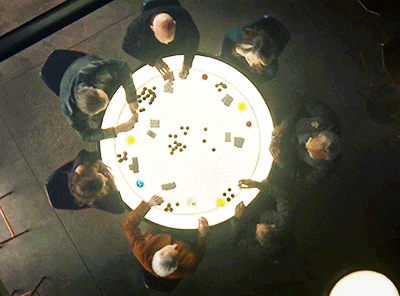
A poker game is being played, but we're table level. All we see are the hands and the cards, which get increasingly stranger as the game goes on. Three voices are speaking, and we get the immediate idea that these people are watching our heroes. Eventually, a fourth voice juts in, and we also find out that a fifth one of them has been invited, but chose not to attend. Finally, we pan up, and we see...some dude.
This guy, whoever they are, should've been a face we've seen in the first and second films, usually hanging around the Daily Planet, but also around Metropolis. In fact, they should be visible in every conflict or battle seen in the films thus far. As we look at the others, we should see similar figures that've appeared in Batman, Wonder Woman, and Flash films that've come put by this point. All extras, and all watching our heroes. In fact, it'd be great if the Flash-focused person hasn't appeared yet, because the Flash's film releases after this one.
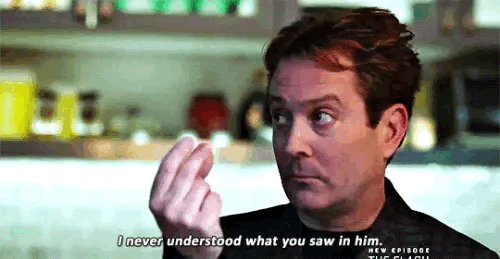
Finally, as we pan back around to the Superman-focused character, who is smoking a cigar, the conversation turns to what's coming. Mxyzptlk is aware of what's coming for Superman, but the rest refer to "the first Crisis". Mxyzptlk sort of brushes it off, even as they're saying things that hint at the first big even film to come in the DCCU. And these should be vague yet intriguing clues to this event. But Mxyzptlk insists that his guy'll be prepared, and that he has a lot of money riding on that outcome. With that, the mysterious figure looks directly at the camera.

Yeah, realizing that we're peering in on the game, he probably berates the nerds in the audience for knowing who he is without it being said (possibly by turning into a more comic-accurate version of himself) , then confirms that he'll be back in the next one, but not as the big threat. Maybe he'll be there to help, maybe not; depends on his mood that day. After a few more snarky remarks, he gives us a look and tells us to buzz off. We may even get a glimpse at the other imps in the room, those being Bat-Mite, Wondermite, and Mopee. And with that, he snaps his fingers, and the film ends officially.
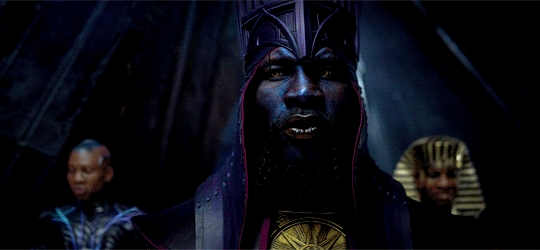
Yeah, I basically pulled an Ant-Man and the Wasp: Quantumania to bring in Mxyzptlk. And, since that scene is one of the best of the film, I don't think that's a problem! In the next film, we know what Mxyzptlk's identity looks like, and he may even give us a wave from the background in his first appearance in the next film. He won't interfere directly, but in the last post-credits scene of this trilogy, he'll finally get caught by Superman. Over time, Superman's had some experience with magic users, probably via Wonder Woman. And magic, in my universe, has a distinctive smell of some kind.
Knowing that Mxyzptlk's been watching him throughout the films, Clark finally confronts him on it, and asks what he wants. And Mxyzptlk actually replies and shows himself, explaining that the battles to come are pretty intense. He won't help or harm, but he just wanted to give a heads-up, mostly because it's fun. With that and a bit more conversation, Mxyzptlk leaves having given this ominous warning.
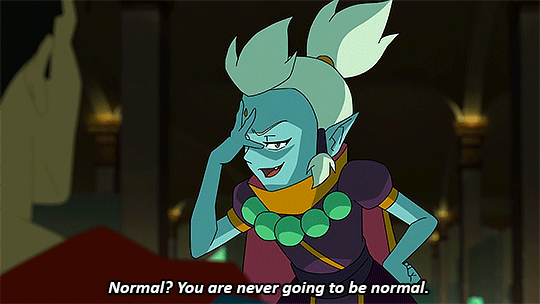
Does he return? Maybe during a Crisis on Infinite Earths movie, maybe in the Darkseid-based Justice League film to come, who knows? This version of the character is basically a Watcher, maybe throwing in some fun chaos here and there. It's sort of hard to add Mxyzptlk into a film series, because he's not a plotter. He's an all-powerful one-off character who, were he to be introduced as a genuine threat to the films, could just kill Superman immediately. It wouldn't make sense. So, make him neutrally bent, and keep him as a fun Easter egg character.
That take may be disappointing to some, but...like, c'mon, guys, he's a pretty big gun. Having him as the ultimate threat of a film also wouldn't make it very fun, because we don't want to see him get killed, but he also can't really win. It'd just be unsatisfying. I like the idea of making him this greater, scarier presence, while also making all of the imps these all-powerful observant beings that watch over our plane with fascination and/or reverence. And maybe, just maybe, we can squeeze some mischief in there somewhere.
Any other ideas on how you would introduce Mr. Mxyzptlk to a cinematic universe (if you should at all)? Reblog! Comment! I'm extremely curious, frankly. This was one of, like, three ideas I had, but the one I thought worked best.
And if you liked this, check out my other Superman essays here!
#dc#dc comics#dccu#my dccu#my dcu#dc cinematic universe#dc universe#maws#my adventures with superman#mr. mxyzptlk#mxyzptlk#mr mxyzptlk#maws tv#maws spoilers#maws mr. mxyzptlk#film essay#character essay#character discussion#kiss kiss fall in portal#maws episode 7
40 notes
·
View notes
Text
Top 5 Famous Faeries
Faeries have long been mysterious and alluring characters in literature and movies, drawing people in with their magical charm and enchantment. There are many depictions of fairies, but Tinker Bell, Puck, Titania, Maleficent, and the Blue Fairy are five that stand out as being especially well known. Tinker Bell, one of the most famous fairies, first showed up in J.M. Barrie's play Peter Pan and the book that followed. Her literary form is that of a small, angry fairy who assists Peter Pan and the Lost Boys. Her character became even more well-known after Disney's 1953 cartoon movie Peter Pan, which showed her as a naughty but likeable fairy. The picture of Tinker Bell as a sparkling, winged pixie wearing a unique green dress has become a lasting sign of magic and wonder, which is why she has her own movies and merchandise.

One of the main characters in William Shakespeare's A Midsummer Night's Dream is Puck, who is also known as Robin Goodfellow. This naughty sprite works for Oberon, the Fairy King, and is known for doing silly, annoying things. As a representation of the faeries' wild and unpredictable nature, Puck's role in the play is to cause funny chaos with love potions and wrong identities. Many movies and plays have used his character, consistently highlighting his naughty charm and witty sense of humor. Titania is the Fairy Queen in A Midsummer Night's Dream, and she is another famous fairy character by Shakespeare. She is strong and royal, and she represents the faerie world's glory and beauty. Titania's troubled relationship with Oberon and her romance with Bottom after her enchantment provide much of the dramatic and comedic stress in the play. Different versions of the story focus on her beauty, power, and the mysterious allure of the faerie world. In Disney's 1959 cartoon movie Sleeping Beauty, Maleficent first appeared as the evil guy. She is a dark fairy who curses Princess Aurora. In contrast to most depictions of faeries, Maleficent is known for her evil power and striking, horned look. The 2014 live-action movie Maleficent and its sequel delve into the character's background, revealing her as a complex individual with a poignant past. This complex portrayal has given her character more depth, turning her from a simple evil guy to a likeable anti-heroine.
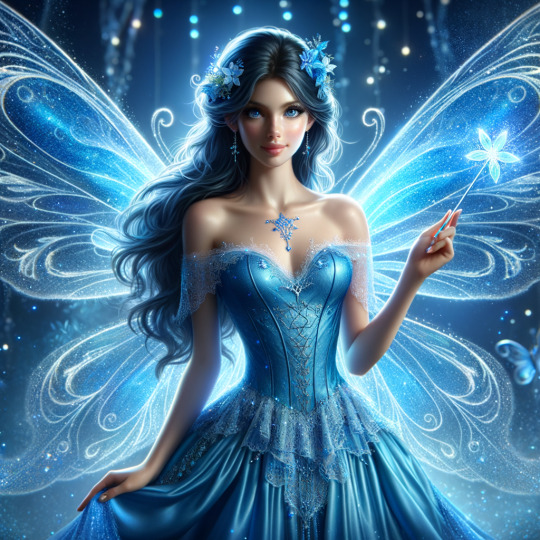
In Carlo Collodi's famous story The Adventures of Pinocchio, the Blue Fairy is another well-known fairy character. Pinocchio, a wooden doll, meets her and learns how to become a real boy. She has a kind and caring character. The Blue Fairy's part in the story brings out themes of change, forgiveness, and the strength of kindness. Her role in Disney's 1940 animated movie Pinocchio solidified her reputation as an elegant, caring, and ethereal presence, which made people love her even more. These famous fairies, each with their own traits and stories, have left an indelible mark on the worlds of writing and film. From Puck's mischievous pranks to Titania's royal presence to Tinker Bell's fiery spirit to Maleficent's dark complexity to the Blue Fairy's kind advice, these characters continue to charm and inspire, embodying the magic of faerie tales all through time.
2 notes
·
View notes
Text
Comparing Penacony and A Midsummer Night's Dream
DISCLAIMER: This is NOT a fleshed out theory! These are just some observations I've made after a little bit of research and completely done for fun. You'll notice as I delve into specifics that the similarities are between the two are limited. I also have not read A Midsummer Night's Dream myself so most of my understanding of the play is from reading synopses and breakdowns of the story and characters.
To start, I'll begin by summarizing AMND as best I can. AMND is a comedy written by Shakespeare that features multiple subplots of different groups of people and how they intersect. Please keep in mind that this is a vast simplification of the story.
There are two settings: the human world and the fairy forest. The two main groups from the human world are the Lovers and the Players, while the third group are the Fairies who live in the fairy forest.
The Lovers face a love square in which M1 and F1 are in love, but F1 is betrothed to M2, and F1's friend, F2, is in love with M2. M1 and F1 plan to elope at night by running into the fairy forest. All 4 enter the fairy forest at night and are toyed with by the Fairies. One fairy in particular, Puck, attempts to play Cupid with a love potion and hijinks ensue.
The Players are a group of actors who are set to perform a play at the wedding of F1 and M2. They plan to rehearse in the forest at night which is where Puck finds them and turns the head of one of the Players into that of a donkey. The other Players run away in terror while the donkey-headed player remains.
The Fairies consist of Puck, servants, and the King and Queen of the Fairies. The royal couple are at odds because the King wishes to make a knight out of the Queen's ward, an Indian prince, but she refuses. The King uses the love potion on the Queen while she sleeps, and when she awakes, she falls in love with the donkey-headed player.
After all of this, the proper feelings of each character are restored. The Lovers (as well as the donkey-headed player) awake in the forest upon daybreak and assume all of their experiences during the night was a dream. M2 is no longer in love with F1 and the planned wedding becomes a group wedding for the 1st and 2nd couples. The Players perform their play terribly, to which everyone laughs. After all the humans go to bed the Fairies enter and bless the house and people.
What initially spurred my loose connection of AMND and Penacony was the discussion of Firefly's real identity and her connection to Sam. One of the aspects of this is Sam's origin as a mecha suit from Glamoth, a world that has its lore featured in the "Firmament Frontline: Glamoth" Planar Ornament set. In the set's lore, Glamoth is described as a world with mecha soldiers to destroy The Swarm; the "weapon" that Glamoth produced was "The Empress", named Titania, who telepathically commanded and controlled the soldiers.
This bit is important because Titania is the name of the Fairy Queen in AMND. This also parallels the plot line of Titania and her ward, where Firefly is Titania and Sam is her ward (Sam is described as a "silver knight" in the game).
We also know that the "real" Penacony exists in the dreamscape, paralleling the "dream" that the Lovers, Players and Fairies experience in AMND. The Charmony Festival resembles the wedding, a large-scale celebration, where multiple third parties are invited.
One of the most interesting parallels between Penacony and AMND are a couple characters and how they interact. In this comparison, Sparkle is Puck, a fairy who plays tricks. One of the humans, a Player, is named Robin Starveling. We know that Robin is set to perform at the Charmony festival similarly to how the Players are set to perform at the wedding. Puck also has the name Robin Goodfellow, which means two characters in AMND have the name Robin, and loosely relates to how Sparkle disguises herself as Robin.
The second part of this Sparkle-Puck connection compares Sampo to Bottom, the donkey-headed player. This is because Bottom and Puck are the only two characters in AMND who directly address the audience and break the 4th wall, similarly to how both Sparkle and Sampo can break the 4th wall. Sparkle playing tricks on Sampo and stealing his mask also resembles Puck transforming Bottom's face.
Unfortunately, this is about as far as similarities I can find go. While there are a couple characters that can be linked between Penacony's story and AMND, this calls into question what the other Star Rail characters would be equated to. For example, Sunday could be compared to Theseus, the human Duke, or he could represent Oberon, the King of the Fairies. Oberon could instead be the Watchmaker, or literally anyone else.
There's also the other characters visiting Penacony, who represent various interstellar factions, who could be compared to the vulnerable and unaware Lovers as they have "entered the dream", so to speak. In another interpretation, they are the Players along with Robin, Sampo, and the Express Crew, as they are "performing" the story of Penacony which has implications that someone is orchestrating things behind the scenes.
There's also the question of who Misha is in all of this. Perhaps he is the prince to the Watchmaker's Oberon, or just something else entirely.
This isn't much of a theory but I felt big brain for just a moment and wanted to share lol. Obviously Hoyoverse can take inspiration from things without directly referencing them (which can be seen in Star Rail's characters' names). Maybe there will be more similarities in the future!
#hsr#hsr theory#honkai star rail#honkai star rail theory#not ACTUALLY a theory but may as well tag as such
3 notes
·
View notes
Text
Nightingale: I'm Off With the Faeries

So yesterday something I've been itching to get in with came out on early access.
Nightingale, a survival/crafting game set in a fictional late 1800s where humanity learned magic from the fair folk and mastered how to travel between Earth and the realms of the Fae.

Nightingale begins however, after a calamity befalls earth. The portal network between Earth and the Realms is sundered, a horrible fog known only as the Pale bursting forth through the portals that locks all it touches in stasis.
You are one of the survivors, having manged to use the portals to flee to the Fae Realms before the network fell completely.

However, you have a benefactor aiding you. None other than the Merry Wanderer of the Night himself, Robin Goodfellow... or Puck as he is called more often. Puck is rather guarded about why he is helping you, but he acts as your tutorial aid during your start in the game.
The game itself is a Survival/Crafting game. Cut off from Earth and all it's industry and man-made conveniences, you must learn to make do on what you can build, hunt, and gather to survive.

So far however, the crafting system is one of the highlights for me. To make something, you need a vague set of parts.
i.e. to make roast meat, you just need "meat" of some sort.
However, this can be prey meat (deer, boar, etc) or predator meat (wolf, or some of the more unusual fae monsters.) It can also be things like fish or fowl or what have you. What you use determines how effective it is. The better the ingredients, the better the meal, but you can use any meat in a pinch.
This applies to all crafting, including equipment and even buildings. For those it can even alter what the thing LOOKS like! A jacket made from boar hide will look totally different from a wolf hide one, and even have different stats!

In order to explore the Fae's realms however, one cannot simply walk around. You must travel between them using the portals within.
The main network is sundered, but by utilizing fae-crafted Realm Cards you can travel from one Realm to Another.




These are split into Biome, Minor, and Major cards (though as the game is in Early Access minor cards aren't fully implemented yet.)
The Biomes do exactly what you would expect. They determine the type of realm you wind up in. A forest, a desert, a swamp, or what have you (those are the only ones I've found so far.)
The Major ones determine what kind of realm it is.
Minor cards give you various little bonuses. Some resources will be more plentiful, or enemies will drop more treasure, and the like.
Byway cards are for the tutorial only, where Puck guides you to safety after your rather catastrophic entrance into the fae realm.
The Abayance card is unique. It opens a realm that is "mostly forgotten by fae and man," a safe haven where you can set up your home base.
The Antiquarian realm is rich in ruins and other fae architecture, and offers better rewards than the Abayance one... but with greater risks.

At first you must find portals across the worlds to travel, but early on after you first travel to an Antiquarian realm you gain the tools needed to craft your own portal at your home base as well, making travel far easier.

As for dangers, well the main one besides wild animals comes in the form of the Bound.
There are two courts of the fair folk. The Summer Court is more open to good relations between the Fae and Humanity, infact Puck is part of this court.
The Winter Court however has no love for the children of Adam and Eve and will send their Bound minions to harry you whenever possible.

The bound range from twisted feral goblins that will charge you down and attack with fang and claw, to more cunning varieties that will use weapons and even explosives against you.

Whats more, there are even ancient fae machines that will attack you if you try to take the treasures they guard.
One hint I do have for these things. My knife did little to him, but his body was made of metal: USE YOUR PICKAXE!

But yes, so far the realms of the Fae are everything I'd hoped for in this game. Its still Early Access so if you're not certain don't be ashamed to wait a bit and let them roll out a few patches and hotfixes. Even with the testing they did, they can't catch EVERY problem until a game goes live (game development is complicated, there's always something they miss.)
At time of writing Steam Reviews are mixed, but hell they always are when a game first launches. Its $30 USD so if you ask me the best way to tell if it's for you is to buy it, install it, set an alarm for an hour and forty five minutes from then, and give it a go. If the alarm goes off and you're not having fun, log out and refund. If you are having fun, turn off the alarm and keep going.
Personally though, I'm having a blast and I can't wait to see what the dev team does to improve the game in future.
4 notes
·
View notes
Text
New Book Review

Wander the Night by Sydney Cobb 100/10 ⭐️
(Mild Spoilers so read at your own risk)
Wander the Night is a modern day sequel to A Midsummer Night’s Dream by William Shakespeare. What makes this book special to me is that the cast is full of familiar characters we know and love from the Shakespeare play. Also to my surprise, there are even characters from over plays that make an appearance or are mentioned throughout the story. This book has a fun, action-packed plot that keeps you on the edge of your seat until the very end.
Now to the main reason I read this book: Robin Goodfellow is aroace. Even though he never uses the actual word on page, his orientation is heavily implied from the very first chapter. I also applaud Cobb for her use of aroace symbolism throughout the story in both subtle and obvious ways.
When talking of romance, Robin is asked what team he’s on. He states he is “not on a team.”
Robin (for reasons I won’t give due to spoilers) gives Kavi a black ring that he immediately puts on his right middle finger.
Robin is no good at sword fighting but is skilled with arrows (get it? aro?). He was even the real Robin Hood.
Throughout the book, Robin has to hide out with various female characters and even has to share a bed with a few of them. There was no awkwardness at all. He just went to sleep. I appreciated that.
He also obviously gets uncomfortable when people flirt with him or make romantic jokes. Robin always acts disgusted and says he doesn’t understand romance. The people in his life, especially Oberon, know this and accept him for who he is.
Wander the Night is a great book that has wonderful aroace representation. I highly recommend it to any fantasy/Shakespeare lover.
#asexual#asexual books#bookblr#reading#wander the night#robin goodfellow#puck#a midsummer night's dream#shakespeare#aroace#aromantic
8 notes
·
View notes
Text
Blog Post 3 ENGL 550 LEC
The many queer references to Nick Bottom (Act 3 Scene 1)
I believe Nick Bottom is the embodiment of a queer character in William Shakespeare’s A Midsummer Night’s Dream. He is someone who wishes to choose different roles to amuse an audience for one play (for Pyramus and Thisbe), yet he is chosen by Robin Goodfellow to play the part of an interspecies pawn for the fairy king and queen.
I would like to start with his last name Bottom, which not only signifies his occupation as a weaver, but also how it references his social status since he comes from a middle- or low-class group of laborers. However, despite his name being connected to his social class and occupation, the main connection would be his soon-to-be interspecies transformation involving the concept of anality. His physical transformation into a donkey is the embodiment of Nick being used by the other side (which is the fairy world) in contrast to the human realm. He was chosen to play Pyramus yet desired to play more parts. He is later caught in the middle between the fairy and the human world. I believe the audience recognizes him crossing between two worlds when he tells himself “What do you see? You see an ass-head of your/own, do you?” (3.1.118). Although he assumes his fellow laborers are making a mockery of him, in Shakespeare’s time, an ass can also mean a donkey (which becomes his new character in the play). He was eventually chosen to be bait and pushed into the fairy world due to conflict between the two head fairies. While he was chosen to play Pyramus, he becomes an ass (mentally and physically) to also make Titania feel like one.
#shakespearesengland
1 note
·
View note
Text
Because Hamish. Jack’s the main character. Randall is Robin Goodfellow. Lilith’s a psychopath. And you’re a killjoy
1 note
·
View note
Text
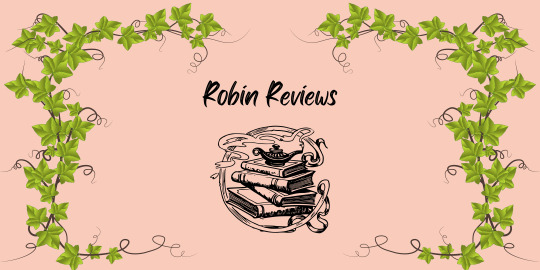
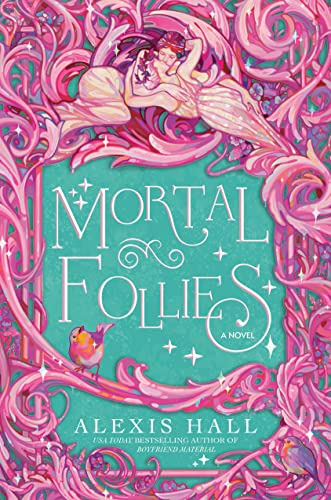
Mortal Follies by Alexis Hall
It is the year 1814 and life for a young lady of good breeding has many difficulties. There are balls to attend, fashions to follow, marriages to consider and, of course, the tiny complication of existing in a world swarming with fairy spirits, interfering deities, and actual straight-up sorcerers. Miss Maelys Mitchelmore finds her entry into high society hindered by an irritating curse. It begins innocuously enough with her dress slowly unmaking itself over the course of an evening at a high-profile ball, a scandal she narrowly manages to escape.
However, as the curse progresses to more fatal proportions, Miss Mitchelmore must seek out aid, even if it means mixing with undesirable company. And there are few less desirable than Lady Georgianna Landrake—a brooding, alluring young woman sardonically nicknamed “the Duke of Annadale”—who may or may not have murdered her own father and brothers to inherit their fortune. If one is to believe the gossip, she might be some kind of malign enchantress. Then again, a malign enchantress might be exactly what Miss Mitchelmore needs.
With the Duke’s help, Miss Mitchelmore delves into a world of angry gods and vindictive magic, keen to unmask the perpetrator of these otherworldly attacks. But Miss Mitchelmore’s reputation is not the only thing at risk in spending time with her new ally. For the rumoured witch has her own secrets that may prove dangerous to Miss Mitchelmore’s heart—not to mention her life. -Storygraph
Not afraid to be shameless and admit that the sole reason I picked up this book was because Robin Goodfellow was the narrator. I have a chaotic brand to maintain and having a vested interest in troublemakers is definitely going to make me a bit biased. Of course, this isn't Robin's story, they're not in the business of telling us their own adventures, but rather others'. There are moments where they influence the story, but they're never the main focus. Instead that goes to Miss Maelys Mitchelmore and Lady Georgianna Landrake, who, I'm sorry to admit, aren't exactly interesting enough to completely distract me from wanting more of the trickster's presence.
The first half had enough going for it, a mysterious curse, sapphic temptations, and a cast of characters that were endearing. Miss. Bickle's eccentricities were a constant delight and Mr. Caesar's role as the straight man made for a well balanced core cast. Unfortunately, once the main conflict wrapped up about halfway through, I wondered what could possibly fill up the remaining page length. Hall devotes the rest of the story to Mitchelmore and Landrake's budding relationship, something I think would have been better developed through the initial conflict, and confusingly adds another curse into the mix. It made the first one seem somewhat superfluous, especially since it never really adds anything to the story once that plot point wraps up.
On a more positive note, I enjoyed the worldbuilding of the story, where gods/goddesses, faeries, and all manner of supernatural beings are known to this Regency society and play a moderately active role in it. It made a nice change of pace to see them regarded as accepted elements of the world, though still posing a great deal of danger. If Hall continues with this series, whether it will follow another character Robin finds suitable to fit into a story, I would love to see it take place in another part of the world with different supernatural creatures and how they incorporate themselves into their environments.
The romance aspect didn't really do much for me. I thought the chemistry was lacking, that there was more of a sensual focus on their relationship, which is fine given the genre, but is entirely lost on me. Georgianna never really broke out of the "broody lady with a dangerous, mysterious past" trope, though Miss Mitchelmore was capable of breaking out of the "naive youth" mold, which made her characterization less tedious. Love the fact that we're seeing the rise of more LGBTQ romances set in the Regency era, a time period I have a bit of fondness for, even if I'm not able to relate to all of them. This will definitely tickle the fancy of anyone looking for one with a historical and fantastical slant to it.
(3/5)
#mortal follies#alexis hall#romance#fantasy romance#reviews#book reviews#lgbtq romance#sapphic romance
1 note
·
View note
Text
Shakespeare and Metatheatre in A Midsummer Night’s Dream – Puck’s Farewell
If you’ve ever studied Shakespeare, you know meta theatricality can be found in nearly all of his plays. He was a big fan of pondering the form in which he was writing and acting in, and so it appeared in his works.
One such moment occurs at the end of A Midsummer Night’s Dream, when the action has concluded, and the play has seemingly ended. Robin Goodfellow/Puck remains on the stage, alone, and addresses the crowd (much like Prospero does at the end of The Tempest):
“If we shadows have offended, Think but this and all is mended: That you have but slumbered here While these visions did appear.”
Puck is acknowledging the scandalous nature of some of the content in the play – bestiality, ass jokes, etc. – and, in his own way, apologizing to the audience. He is “mending” the relationship between actor and audience by bringing the audience into the dreamy, magical forest of Athens. By encouraging us to think that we have “slumbered here / while these visions did appear,” he puts us in the position of our main protagonists (Hermia, Lysander, Helena, and Demetrius) who believe that they have seen visions of the fairy world after Oberon and Puck’s interference in their love lives. Even while bringing us into the play in such a way, Puck finishes his monologue by reminding us we are still audience members and he an actor, as he bids us “good night” and asks that for our “hands” aka our applause.
0 notes
Text
Actually no, I'm not done yet.
Xanatos spends his screentime doing two things: scheming, and finding new and unethical ways to use magic and technology. The man has used necromancy to revive a shattered gargoyle, broken a 1,000-year-old curse by reconstructing a castle brick-by-brick above the Manhattan skyline, and created a hyper-intelligent clone of one of the main characters. His butler is Puck. Not a puck, but the Puck - Robin Goodfellow himself.
The only creature in the show's universe that ever unambiguously defeats him is Oberon, the King of Faerie himself. And Oberon had to kidnap his son to do even that.
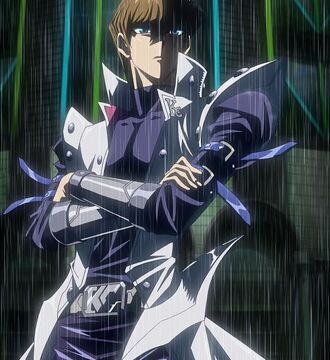
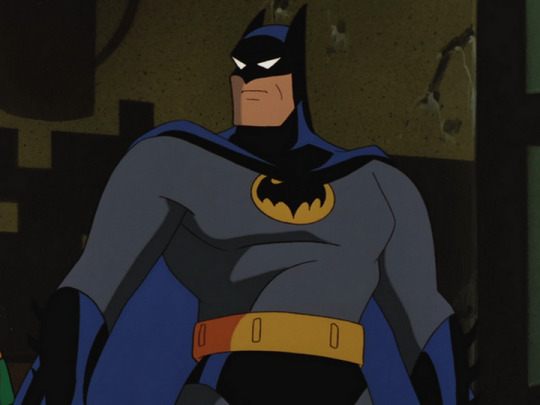
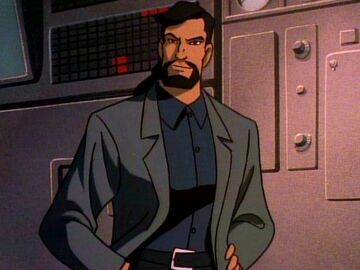

658 notes
·
View notes
Text
@thegoodfellow.

“Robin?” Èdelie called out, still frizzled from the aftermath of prior events. Cluelessness cannot describe the position the brunette is left in, satisfied that all has fallen back in place, yet mortified of what’s potentially left to come. Body unable to physically move, paleness overtook her features, croakily inquiring, “What do we do now?” Because something must be done, and at this rate, she’d do anything to ensure proper reparations for all feys. Though the idea of getting blood on her hands somewhat startled her, Èdelie physically and emotionally felt defeated, suspiring defeat and tiredness.
#èdelie / main verse conversations.#èdelie / main verse conversations ft. robin goodfellow.#thegoodfellow
4 notes
·
View notes